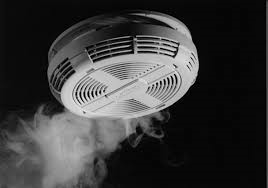Smoke Alarms – Are you Compliant? (QLD)
Last year, Archers the Strata Professionals published an article on the topic of smoke alarms in anticipation of the pending legislative changes, which can be read here.
With the recent Grenfell Tower tragedy and with changes effective as of 1 January 2017 pertaining to smoke alarms, we feel that it is timely to remind readers of the particular compliance requirements in place to keep unit occupants safe in the event of a fire.
The legislation applies to Class 1A townhouses and Class 2 unit dwellings that are newly constructed or significantly renovated. These classes are common to strata schemes with the certificate of classification identifying building Classes 2 to 9 required to be displayed within the common property.
The Queensland Fire and Emergency Services Amendment Bill 2016 and Building Fire Safety Legislation Amendment Regulation 2016 specifies that photoelectric smoke alarms are to be fitted from 1 January 2017 onwards. Furthermore, all residential properties leased or sold will need to meet compliance requirements after five years and all owner-occupied private dwellings will need to comply with this legislation within 10 years.
In summary, from 1 January 2017 smoke alarms installed in new homes must be:
- Photoelectric type only;
- Hard wired to the electricity supply;
- Interconnected to every other smoke alarm;
- Installed in each bedroom;
- Installed in hallways serving bedrooms; and
- Installed in the exit path of every storey not containing bedrooms.
Are you Protected?
There are two types of smoke alarms, ionisation and photoelectric. Ionisation smoke alarms ‘feel’ smoke by detecting invisible particular of combustion. Evidence suggests that Ionisation smoke alarms are less effective than the photoelectric alarms at detecting slow-smouldering fires. The photoelectric alarms ‘see’ smoke by detecting particles of combustion and react more quickly, thus working more effectively.
The new legislation provides a 10-year phased rollout of interconnected photoelectric smoke alarms in Queensland. This means:
- From 1 January 2017: in all new dwellings and substantially renovated dwellings (this applies to building applications submitted from 1 January 2017).
- From 1 January 2017: in all new dwellings and substantially renovated dwellings (this applies to building applications submitted from 1 January 2017).
- From 1 January 2027: in all other domestic dwellings.
To read more: https://www.qld.gov.au/emergency/safety/smoke-alarms?
This article was contributed by Ben Travers of Positiv Energy Electrical.


Leave a Reply